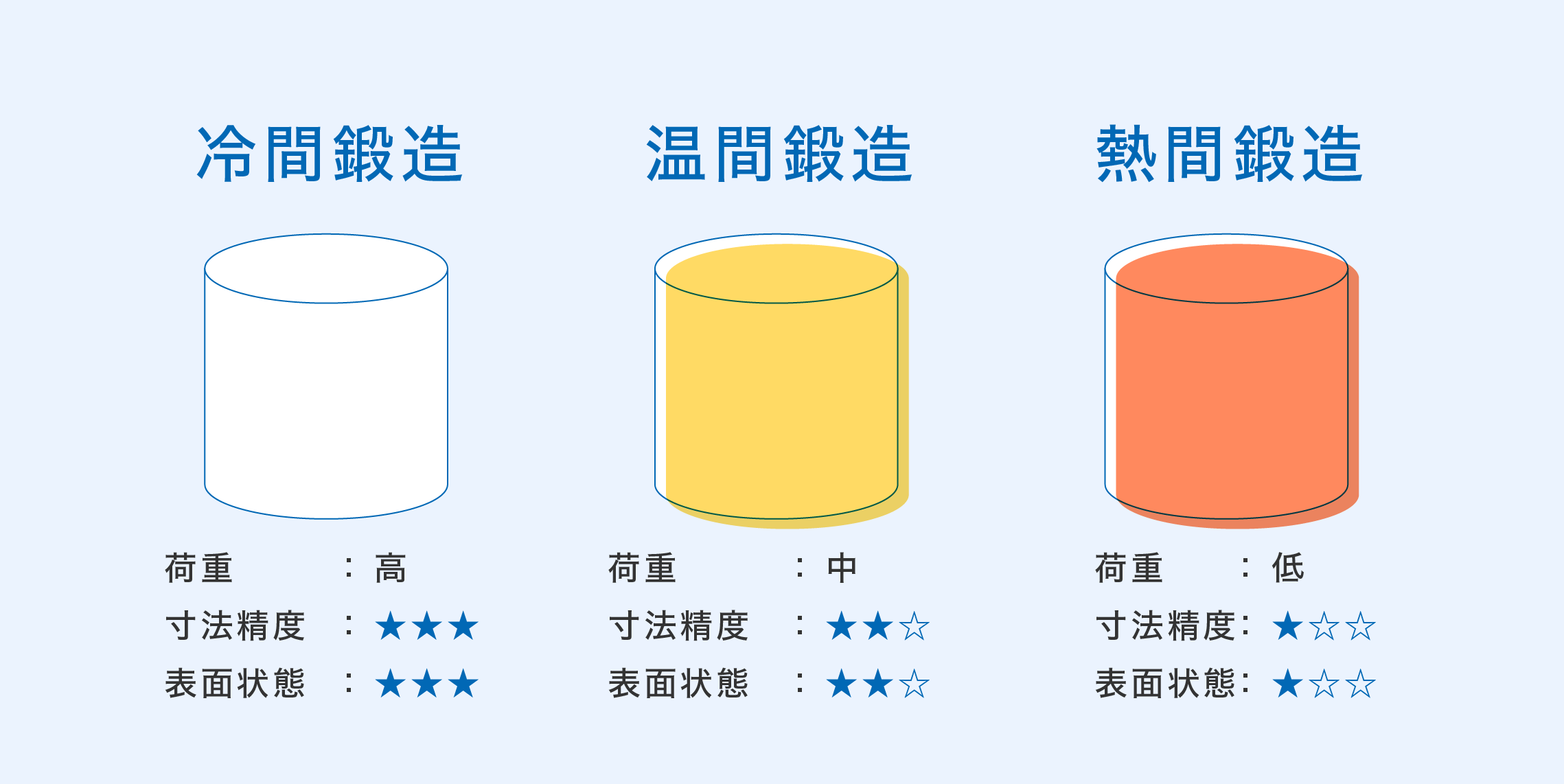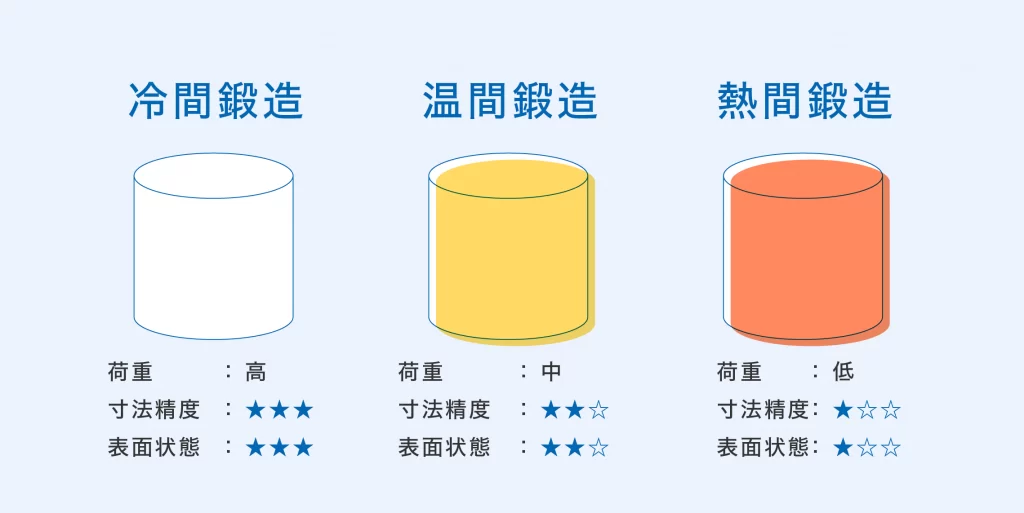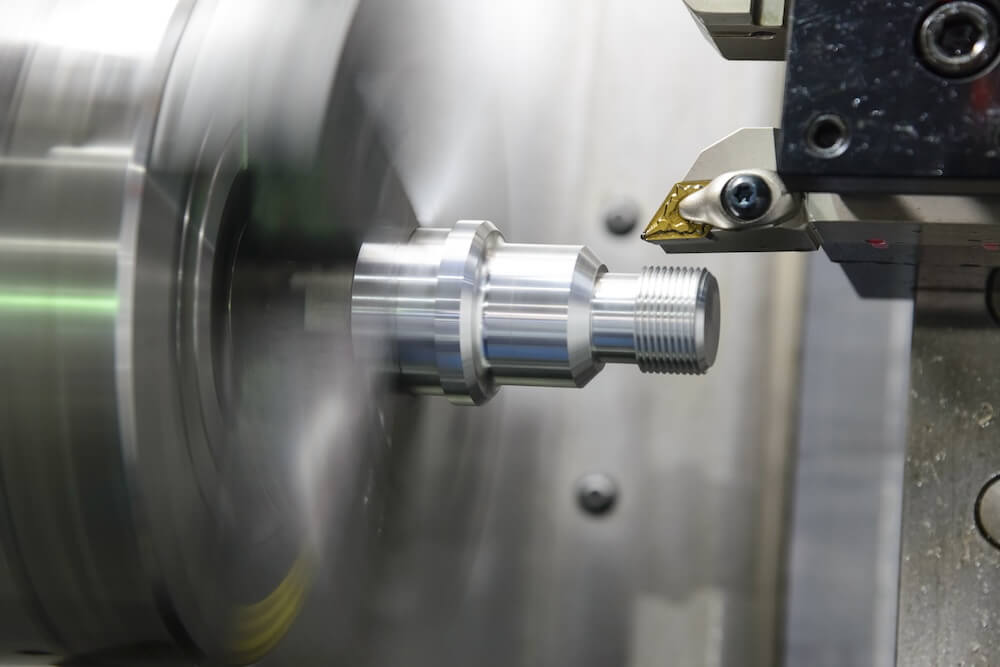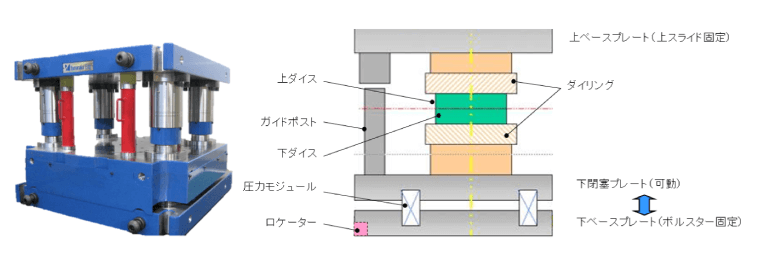
Release Date:2024/09/03
What is Cold Forging Die? – Differences Between Cold, Warm, and Hot Forging Dies & Materials
As the name suggests, a Cold Forging Die is a metal die using the Cold Forging method.
Cold Forging is a forming method that does not involve heating materials (metals). This process is carried out at room temperature or temperatures close to room temperature. It is also referred to as Plastic Forming because it utilizes the plasticity of metals.
Since the forming process occurs at room temperature, the deformation and dimensional changes of the metal can be predicted with high accuracy. These predictions can be fed back into the design process, enabling the production of high-precision products. Additionally, forming under high pressure ensures that the precision and accuracy of the die’s finishing process are directly transferred to the
In this article, we will introduce the basics of Cold Forging Dies, explain the differences between cold, warm, and hot forging dies, and discuss how to select materials to produce high-precision forged products and extended die life.
Contents
What is Cold Forging? – Differences Between Cold, Warm, and Hot Forging Dies
Forging can be categorized into three types: Cold Forging, Warm Forging, and Hot Forging. Below are the features of each method:

| Forging Type | Load | Dimensional Accuracy | Surface Quality |
| Cold Forging | High | High | High |
| Warm Forging | Medium | Medium | Medium |
| Hot Forging | Low | Low | Low |
Each method has distinct characteristics, which are summarized as follows:
Cold Forging: High load, high dimensional accuracy, and excellent surface quality.
Warm Forging: Moderate load, moderate dimensional accuracy, and moderate surface quality.
Hot Forging: Low load, low dimensional accuracy, and lower surface quality.
What is Cold Forging?
Cold Forging refers to forging processes performed at room temperature without applying heat to the material. It is also known as plastic working because it utilizes the plasticity of metals. Since cold forging is carried out at room temperature, it avoids rough surfaces caused by scaling and minimizes dimensional deviations due to heating and forging conditions.
This method enables the production of forged products with high dimensional accuracy and smooth surfaces. Additionally, cold forging requires minimal post-processing, resulting in significantly reduced material waste. However, cold forging also has challenges. The high loads applied to tools and the deformation process can make materials brittle, leading to issues such as cracks and dimensional changes caused by residual stress during forging.
What is Warm Forming?
Warm forging is a forging process performed at temperatures between those used in hot and cold forging, typically ranging from 200-300℃ or 600-800℃. Warm forging is ideal for forming complex shapes and processing materials that are difficult to forge using cold forging, thanks to its lower deformation resistance.
However, warm-forged products generally have lower dimensional precision and surface quality compared to cold-forged products.
What is Hot Forging?
Hot forging refers to forging processes performed by heating materials to a temperature above their recrystallization temperature but below their solidus temperature. When the ductility of the material increases, its deformation resistance decreases, making it possible to form complex shapes and significantly reduce machining costs. Additionally, hot forging improves the mechanical properties of the material through the forging process.
However, hot forging has disadvantages, such as lower dimensional accuracy and surface quality compared to cold and warm forging. These issues arise due to oxidation scaling and temperature variations during processing.
Materials for Cold Forging Dies
The material and quality of cold forging dies involve a trade-off between hardness and toughness. To prevent crack growth, it is essential to maintain the minimum hardness required to prevent plastic deformation on the die surface while selecting the materials and heat conditions that maximize toughness at that hardness. Below are commonly used animals for cold forging dies.
These are popular die materials:
- High-speed steel: High-speed steel offers a balance of hardness and toughness, making it ideal for preventing defects such as chipping. Matrix high-speed steel with high toughness is also available..
- Powdered high-speed steel: Powdered high-speed fills the hardness range between conventional high-speed. Steel and cemented carbide. It is made by melting, powdering, and heating the material under pressure to form the desired shape.
- Cemented carbide: Cemented carbide has seen significant advancements with the widespread adoption of HIP(Hot Isostatic Pressing) treatment, which has expanded material selection options. However, the choice of material often relies on experience and trial and error, as there are limited guidelines for addressing specific issues.
How to Choose Materials for Cold Forging Dies
Here are some key points for selecting steel-based materials and cemented carbide for cold forging dies. Please use them as a reference.
Selection of Steel-Based Materials
High-Temperature Tempering
- Select alloys that achieve the required hardness through high-temperature tempering above 500℃, limited to secondary hardening alloys.
- For forming sections in warm forging, choose materials that can be tempered at higher temperatures, such as above 600℃, to achieve the required hardness.
Material Transition Based on Requirements
- Use SKH51 as the standard steel grade.
- When emphasizing hardness, transition from high-alloy powdered high-speed steel to cemented carbide.
Key Points in Heat Treatment
- Ensure residual austenite is reduced to 0% by increasing the number of tempering cycles to prevent the formation of strain-induced martensite.
- While the ICFG data sheet specifies residual austenite to be below 5%, it is recommended to increase tempering cycles to achieve 0%.
Selection of Cemented Carbide
Young’s Modules for Precision
- To minimize deformation in forming sections and improve forging accuracy, select cemented carbide with a high Young’s modulus (longitudinal elastic modulus).
- Use V50-HIP as the standard material grade.
Material Transition Based on Requirements
- When emphasizing toughness, choose alloys with higher cobalt (Co) content.
- When emphasizing hardness, choose alloys with lower cobalt (Co) content.
- To maintain hardness while emphasizing toughness, select ultra-fine particle alloys.
Future Research Areas
- Further studies are needed on the segregation of cobalt solid solutions, which are said to be related to the formation of micro-cracks.
- Research is also required on adjusting the composition of cobalt solid solutions, which is considered effective for enhancing toughness.



